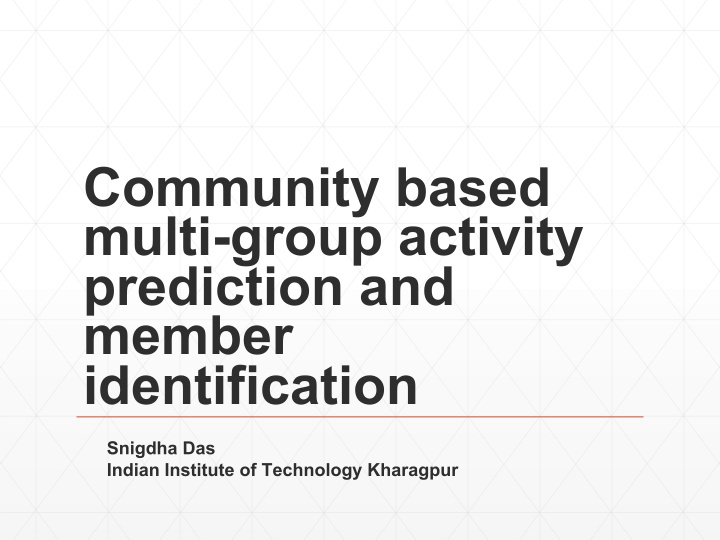



Community based multi-group activity prediction and member identification Snigdha Das Indian Institute of Technology Kharagpur
A Natural Disaster: Earthquake Pre-Earthquake Situation at Nepal People’s activity before Earthquake (25/4/2015 11:51:34)
A Natural Disaster: Earthquake People’s Movement Post-Earthquake Situation at Nepal People’s activity after Earthquake (25/4/2015 11:51:42)
Human Activity Recognition Single Activity Recognition • S1 = {sitting, standing, walking} Multiple Activity Recognition • S1 = {sitting, standing, walking} • S2 = {sitting, standing, walking} • S3 = {sitting, standing, walking} Group Activity Recognition • G1 = {coffee break, seminar}
What is a Community? Population and community A population with common characteristics
Group Formation Academic Community • Group Activity: Group Activity: Meeting Group Activity: Presentation Meeting • All members are sitting and discussing • Group Activity: Presentation • All members are sitting except the presenter Challenge: Given a population, how can we identify these two classes
Group Transition Group Activity: Group Activity: Coffee Break Coffee Break • Some people drinking coffee • Some walking • Some sitting • Some standing • Few running Challenge: Given a population, how can we identify the transition of groups
Current Limitation and Work Done ▪Limitation: ▪Social dynamics-based user profiling may not be continuous ▪Depends upon the users’ interaction with the social network ▪Solution: ▪Daily activity provides continuous signature of the users without involving them ▪Work Done: ▪For identifying the members’ of the community, our first step – User Identification
User Identification Model Two step classification: activity based and time based
Filtering Results Activity patterns are more prominent
Model Accuracy Our model outperforms for all the activities cases
Thank You
Recommend
More recommend